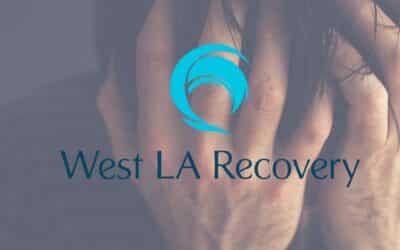Party Drugs
The world of recreational drug use is constantly changing, and it’s happening faster than ever before. Party drugs, also known as club drugs, are substances that alter a person’s mental state and are commonly used by young people at bars, nightclubs, concerts, and parties. These drugs are specifically designed to make people more sociable, energetic, and euphoric.
Current Trends in Youth Drug Use
In 2025, youth culture has adopted a troubling combination of both traditional substances and new synthetic drugs. This includes:
- Traditional substances such as alcohol, marijuana, and ecstasy
- New synthetic drugs that are being developed and introduced to the market
The rise of virtual raves, augmented reality parties, and hybrid social events has created new opportunities for young people to experiment with drugs. Additionally, social media platforms now feature coded discussions about drug experiences, making it easier for users to share their stories without drawing attention from authorities or parents. Underground digital marketplaces also play a role in this trend by providing convenient access to various substances.
Challenges for Parents
Parents today face unique challenges in this rapidly changing environment. Some of these challenges include:
- The emergence of designer drugs that may not be well-known or understood
- The evolution of existing substances such as marijuana or cocaine
- The potential risks associated with mixing different drugs or combining them with medications
It is crucial for parents to stay informed about these developments in order to effectively communicate with their children about the dangers of substance use.
Understanding today’s party drug landscape requires awareness of:
- Digital platforms where drugs are discussed and distributed
- New synthetic substances entering the market
- Changing patterns of drug use in social settings
- The intersection of mental health and substance use
As parents, recognizing these shifts in youth drug culture could make the difference between prevention and crisis.
The Party Drugs of 2025
The world of party drugs is constantly changing. While some traditional substances are still popular, new synthetic drugs are also becoming more common.
Traditional Party Drugs Still Popular
Despite the emergence of new substances, certain traditional party drugs continue to be widely used in social settings:
- MDMA (Molly) – A synthetic drug that alters mood and perception, creating intense feelings of pleasure and emotional warmth.
- Cocaine – A powerful stimulant that produces short-lived euphoria and increased energy.
- Ketamine – A dissociative drug causing detachment from reality and hallucinations.
New Synthetic Substances on the Rise
Experts predict that in 2025, certain new synthetic substances will become more popular:
- Nitazenes – A class of synthetic opioids significantly more potent than fentanyl, presenting severe risks of overdose.
- Tianeptine – An antidepressant misused for its opioid-like effects, marketed under various names on social media.
Concerning Trends in Prescription Medication Misuse
The misuse of prescription medications has reached concerning levels. Students increasingly turn to stimulant medications like Adderall and Ritalin for both academic performance and recreational use. These medications, when taken without prescription, can create euphoric effects similar to cocaine but carry significant risks of addiction and adverse health effects.
A particularly dangerous trend involves mixing these substances, creating unpredictable and potentially lethal combinations. The accessibility of these drugs through social media platforms and dark web marketplaces has made them increasingly available to younger populations.
Health Risks Associated with Party Drugs
The health implications of party drug use extend far beyond the immediate high.
MDMA (Ecstasy)
MDMA can cause dangerous spikes in body temperature, leading to dehydration and potential organ failure. Users often experience severe jaw clenching, blurred vision, and dangerous heart arrhythmias during use. The days following MDMA use bring intense depression as serotonin levels crash.
Ketamine
Ketamine creates profound dissociative states that can result in accidents and injuries. Regular use damages the bladder and kidneys, while cognitive impairment becomes increasingly apparent. The risk of developing substance use disorder rises sharply during adolescence – the brain’s reward system is particularly vulnerable during these formative years.
Prescription Stimulants
Prescription stimulant abuse takes a severe toll on cardiovascular health. Blood pressure spikes, sleep patterns disrupt, and appetite suppression leads to malnutrition. The psychological impact runs deep – anxiety disorders emerge as young users struggle with crashes between doses.
Mental Health Effects
Mental health deteriorates as substance use escalates. Depression and anxiety become constant companions, creating a vicious cycle where teens use drugs to self-medicate their symptoms. Brain scans reveal concerning changes in areas controlling emotion and decision-making. These alterations can persist long after drug use stops, affecting academic performance and relationship development during crucial developmental stages.
In such dire situations, it becomes essential to support a loved one in addiction treatment. Understanding the complexities of their struggles and providing the necessary help can significantly aid in their recovery journey.
Recognizing Signs of Drug Use in Teens
Parents often struggle to differentiate between typical teenage behavior and signs of substance use. Changes in your teen’s behavior, appearance, or daily routines can signal potential drug experimentation or use.
Behavioral Red Flags:
- Sudden changes in friend groups or social circles
- Unexplained need for money or missing valuables
- Declining academic performance
- Skipping classes or after-school activities
- Increased secrecy about personal life
- Breaking curfew or house rules
- Loss of interest in previously enjoyed activities
Physical Warning Signs:
- Bloodshot or glazed eyes
- Frequent nosebleeds
- Sudden weight loss or gain
- Changes in sleep patterns
- Poor hygiene or dramatic shifts in appearance
- Slurred speech or impaired coordination
- Unusual body odors or excessive use of perfume/cologne
Mood and Personality Changes:
- Rapid shifts between depression and euphoria
- Increased irritability or aggression
- Paranoia or anxiety
- Lack of motivation
- Difficulty focusing or concentrating
- Unexplained giggly or giddy behavior
These signs don’t automatically indicate drug use – many can be part of normal teenage development. The presence of multiple signs, particularly when they represent significant changes from your teen’s usual behavior, warrants closer attention and possibly a conversation about substance use.
The Role of Peer Pressure and Social Media in Drug Use Among Teens
The teenage years are a crucial time when fitting in with friends often influences decisions. Research shows that 90% of teens who use drugs first tried them because their friends were using. The need to be accepted or stay popular can lead even high-achieving students to make dangerous choices.
How Social Media Amplifies Peer Pressure
Social media platforms make peer pressure even stronger by showcasing carefully crafted posts that glorify drug use. Teens frequently come across content depicting parties where substance use seems normal, creating a warped view of reality. These platforms also act as marketplaces where dealers target young users through secretive language and innocent-looking posts.
Challenges Posed by the Digital Landscape in 2025
The online world of 2025 brings specific difficulties:
- Instagram and TikTok algorithms promote drug-related content to teens interested in party culture
- Private messaging features facilitate discreet discussions about drugs
- “Challenge” videos normalize risky experimentation with substances
- Influencers subtly endorse drug use through paid partnerships
Understanding the Impact on Teens
Parents need to realize that social media creates an environment of constant pressure. Just one post showing friends using drugs can trigger feelings of FOMO (fear of missing out) and social anxiety. This ongoing exposure makes traditional peer pressure more powerful than ever before.
The Importance of Parental Involvement
The combination of online influence and real-life social interactions calls for parents to actively engage in both their teens’ virtual and physical friend groups. This is crucial as social media significantly impacts social skills among teenagers, further complicating their ability to navigate these challenges effectively.
Effective Communication Strategies for Parents Talking to Teens About Drugs
Creating meaningful conversations about drug use requires a delicate balance of openness and authority. Start these discussions during calm, neutral moments – perhaps during a car ride or while preparing dinner together. These casual settings help reduce the tension often associated with serious conversations.
Active listening plays a crucial role in these discussions. When your teen shares their thoughts or experiences, resist the urge to lecture or judge. Instead, ask open-ended questions that encourage deeper reflection:
- “What do you think makes some people try drugs?”
- “How would you handle a situation where drugs are present?”
Build trust by sharing age-appropriate personal experiences or stories you’ve heard. This authenticity helps teens relate to the conversation and feel more comfortable expressing their concerns.
Create regular “check-in” opportunities through shared activities like weekly movie nights or morning walks. These consistent interactions establish a foundation of trust where teens feel safe discussing challenging topics.
Remember to acknowledge the complexity of peer pressure and social situations. Rather than issuing ultimatums, help your teen develop practical strategies for handling difficult scenarios. Role-playing exercises can be particularly effective in preparing them for real-world situations.
Stay informed about current drug trends and use this knowledge to guide your conversations. When teens sense that parents understand their reality, they’re more likely to engage in honest dialogue about their experiences and concerns.
Preventing Teen Drug Abuse
Parents play a crucial role in preventing teen drug abuse through consistent guidance and clear boundaries. Setting specific rules about parties and social gatherings creates a protective framework for teenagers. These rules should address curfews, adult supervision, and communication expectations.
Essential Prevention Strategies:
- Establish clear consequences for breaking substance-related rules
- Know your teen’s friends and their parents
- Monitor social media activity and online interactions
- Keep track of prescription medications in the home
- Stay involved in your teen’s daily activities and interests
Party Safety Guidelines:
- Require check-ins during social events
- Verify adult supervision at gatherings
- Set specific pick-up and drop-off times
- Create a safety code word for emergency situations
- Maintain an open-door policy for your teen’s friends
Building trust through consistent enforcement of these rules strengthens family bonds and reduces the likelihood of substance experimentation. Regular family activities and shared meals provide opportunities to reinforce these protective measures while strengthening parent-child relationships.
Active involvement in school and extracurricular activities helps teens develop positive interests and healthy peer relationships. Supporting these activities creates natural alternatives to situations where drug use might occur.
Seeking Professional Help from West LA Recovery
Parental vigilance and early intervention can make a crucial difference in preventing teen substance abuse. When concerns arise about your teen’s potential drug use, professional guidance provides essential support and expertise.
At West LA Recovery, we specialize in helping families navigate the challenges of teen substance abuse. Our experienced team offers confidential consultations, comprehensive assessments, and personalized treatment plans designed specifically for young people struggling with party drugs and other substances.
It’s important to understand the complexities of addiction. Our resource on Understanding Addiction: Causes and Effects can provide valuable insights into this complex disease.
Don’t wait until the situation escalates. Your proactive approach today can prevent serious consequences tomorrow. Our dedicated professionals are here to support your family through every step of the recovery journey.
Contact us today to learn how we can help your teen build a healthier, drug-free future.







